Silver Lab – The Facts About Silver Labrador Retrievers
Nothing starts a lively conversation among Labrador fans quite so quickly as the topic of silver Labs! Silver Labradors are basically chocolate Labs with a twist. They have a gene that dilutes that rich chocolate fur and turns it into a pale, silvery grey color.

Where that gene came from, how it got into Labs and whether it should be there at all, is a debate that has been raging for decades. So I’m going to dig into the evidence and find out what’s going on with this controversial Lab!
- What are silver Labs really like?
- Introducing the dilute gene
- The great silver Lab controversy!
- Pros, cons, and buying tips
Whether you think the Silver Lab is a disaster or a delight, you should find plenty here to interest you and you’re welcome to add your thoughts to the many comments below. Let’s start with the facts and then move on to the debate.
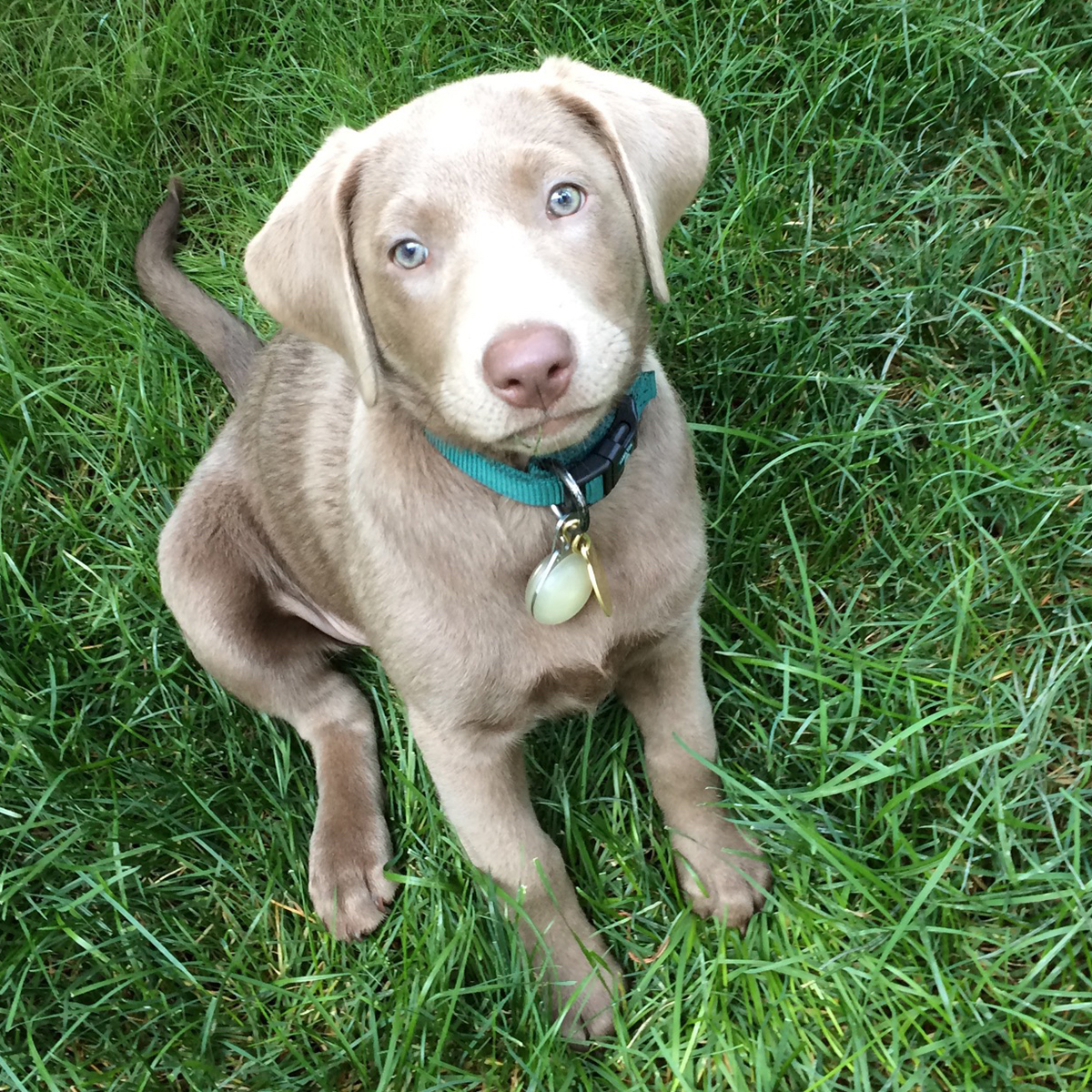
Introducing The Dilute Gene
There are only three different colors of Labrador Retriever recognized by the American Kennel Club. Those colors are:
Missing from the list you’ll notice are cream, white, fox-red, champagne, charcoal and silver. The first three are simply variations in the coat color of the yellow Labrador, and are registered with the AKC as yellow Labs.

The last three, are a bit different. They are dilutions of the three major colors. Champagne is a dilution of yellow. Charcoal is a dilution of black, and of course silver is a dilution of chocolate.
The coat color dilution gene is common in many animals including dogs, cats and rabbits. And the AKC recognizes several dog breeds in diluted colors. The Weimaraner is one example. And the Chesapeake Bay Retriever is another.

Labradors are not included among those breeds where the dilution gene is accepted. However the AKC will allow silver Labs to be registered, provided they are registered as chocolate.
This is a source of major annoyance to many Labrador enthusiasts. Many of whom think that silver labs should not ever be registered as pedigree dogs. And who believe that admitting these dogs to the breed register has allowed the spread and proliferation of silver Labs to take place across the USA
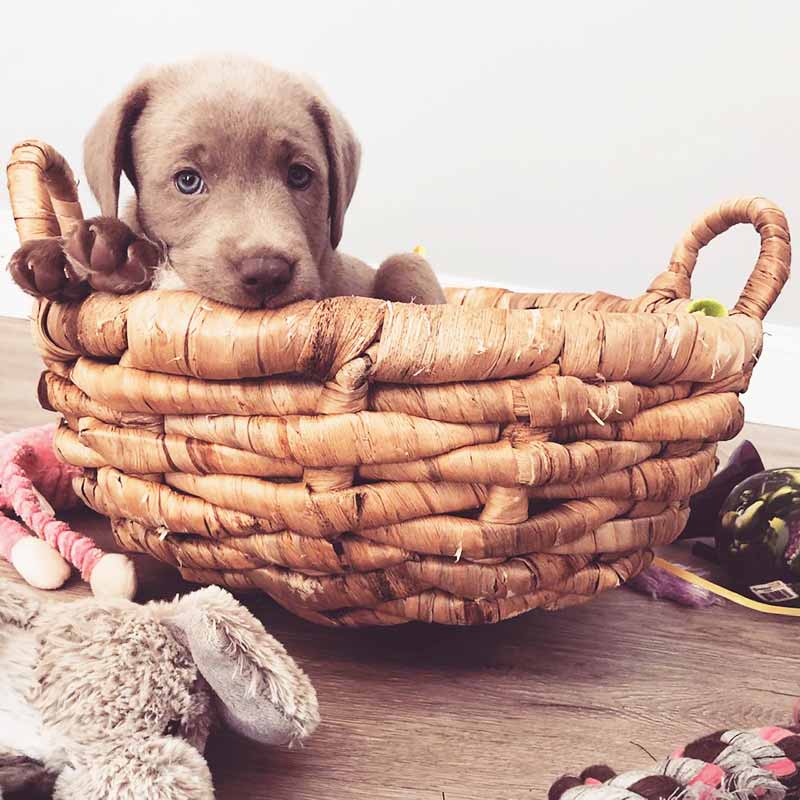
There are many opinions on the rights and wrongs of breeding and registering Silver Labs, and we’ll be taking a closer look at them, but those are the bare facts as they stand at the moment. First let’s dig into the genetics, and find out how we get silver fur on a chocolate Lab.
How The Dilute Gene Works
You can read about the way B and E genes control the underlying coat color of the three recognized Labs in this article on Labrador color inheritance.
The gene that dilutes chocolate fur to silver is known as the D gene. And like many genes, the D gene acts as a type of switch. Every dog with dilution genes inherits a pair of them. One from each parent. And there are two types of D gene. Big D and little d
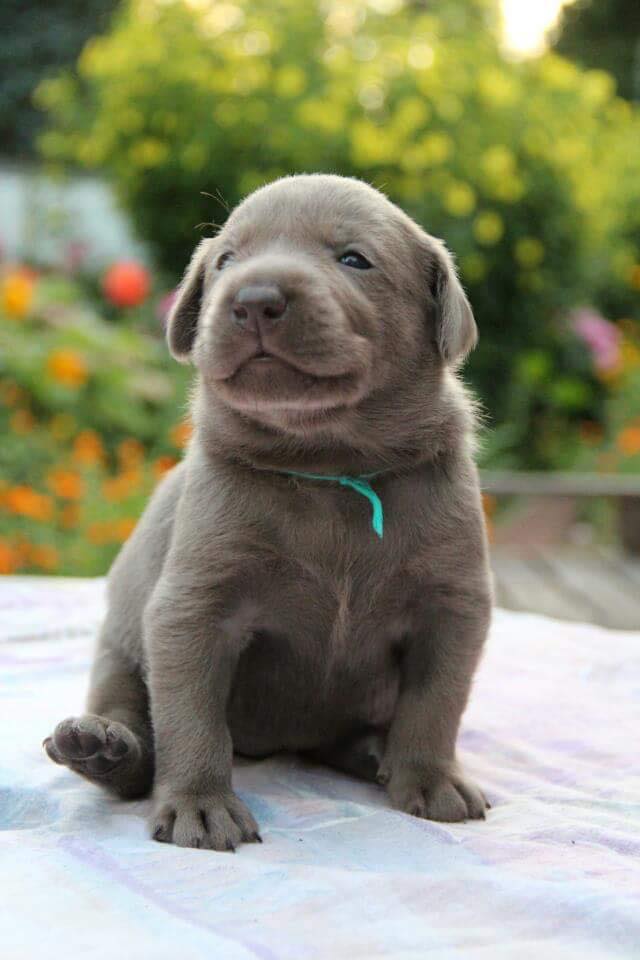
So there are three possible combinations that your Labrador can inherit
- DD
- Dd
- dd
Only a chocolate dog with two little ds can be silver. That’s because the big D gene is dominant. It over-rides, or switches off, the little d gene whenever they are paired together. So if your dog inherits just one little d gene, the color dilution will not take place and your dog will have a normal full strength chocolate coat. They will however, pass on that little d gene to around half of any puppies they may have.
In some breeds of dog, all individuals have two little d genes. Weimaraners are one example. And for many decades there were no recorded instances of the dilute coat in Labrador Retrievers.
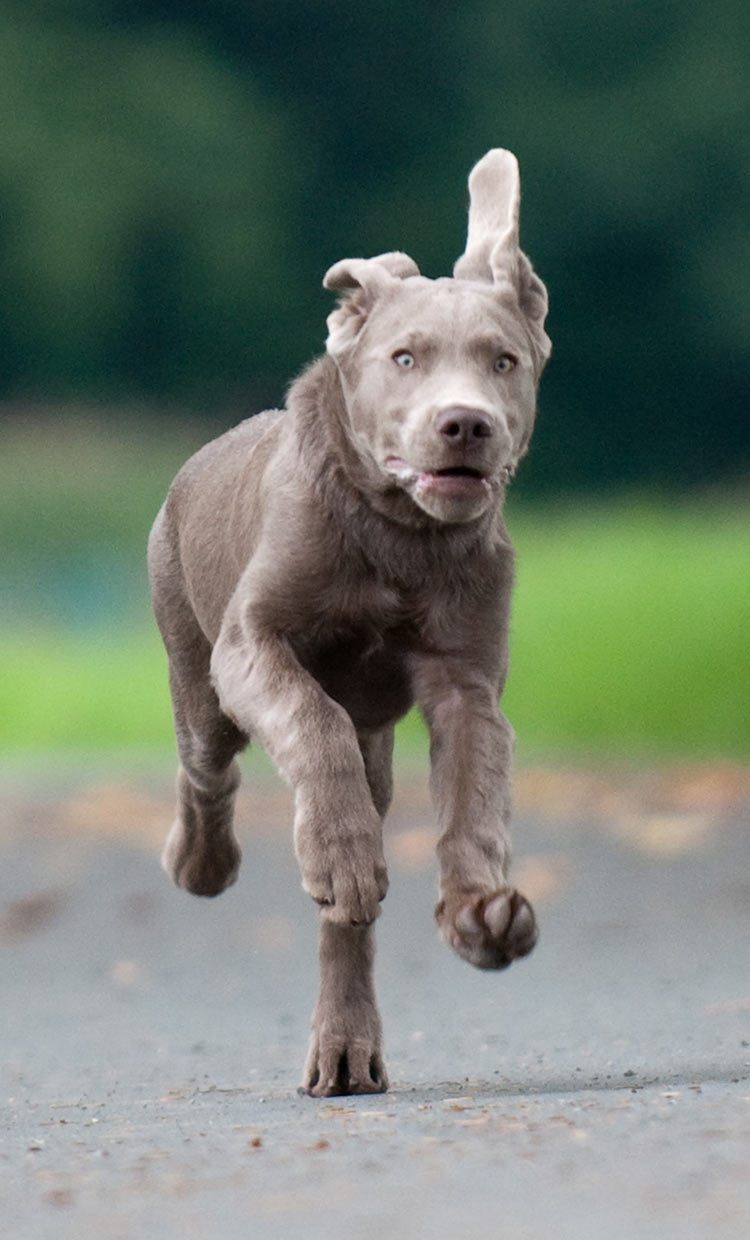
Which raises a number of questions, including:
- When did the dilute gene first appear in Labradors?
- How did the dilute gene get into the Labrador breed?
- Should silver Labs be registered as pedigree dogs?
We’re going to go into those in some detail in a moment. But first let’s look at what you and your family are getting into, if you decide to buy a silver Lab puppy.
What Are Silver Labradors Really Like?
Silver Labs make great family pets. They need plenty of exercise and are ideally suited to active, outdoor life.
All Labradors can be very bouncy and excitable when young so a silver Lab puppy isn’t always a great match for toddlers or those unsteady on their feet. But an older, calmer, rescue Lab can make a perfect companion for younger children.
Labradors are generally very friendly and sociable dogs that love company. So your silver Lab is likely to be happier in a family where there are people at home for part or most of the day.
Like all Labs they shed, heavily at times, so if perfect carpets and soft furnishings are your dream, then they might not be the best pet for you.
How big do silver Labs get?
Because they are essentially a variation on the chocolate Lab, you can expect the same size range in your dog once they are fully grown. The breed standard height for a Labrador is up to 24 and a half inches for a male, and an inch shorter for a female. Individuals can vary a couple of inches or more either side of that.
When it comes to body weight, the variations can be even greater and will depend on which of two groups (American or English) a silver Lab falls into. Male Labs often reach about 70lbs in weight. Females about 10lb lighter. But there can be as much as 20lbs difference either side of that average.
American Labs bred for hunting and retrieving are slimmer, taller and often lighter than the chunkier English type that you see in the show ring
Are silver Labs rare?
As a relatively new color variation, silver Labs are rare in some countries. Partly because registration of silver puppies is not widely permitted.
Some national kennel clubs and breed clubs have clarified their views on silver Labradors by issuing statements about them. You can find some of these statements in the links below:
Even in the USA, silver is still a more unusual color and silver puppies can be harder to find than black, yellow or brown. That can have an impact on the price of your puppy.
How much do silver Labs cost?
Prices vary greatly but as a rough guide you can expect to pay upwards of $1000 for a silver Labrador puppy. When you are considering whether or not you can afford a silver puppy remember that medical insurance will likely be your greatest outlay over the dog’s lifetime. Not the once only purchase price.
You may have heard that silver Labs are over-priced. In fact objections to so-called overpricing are common in dog breeding and not confined to the silver Lab. The same accusations are often aimed at Labradoodle breeders and Cockapoo breeders.
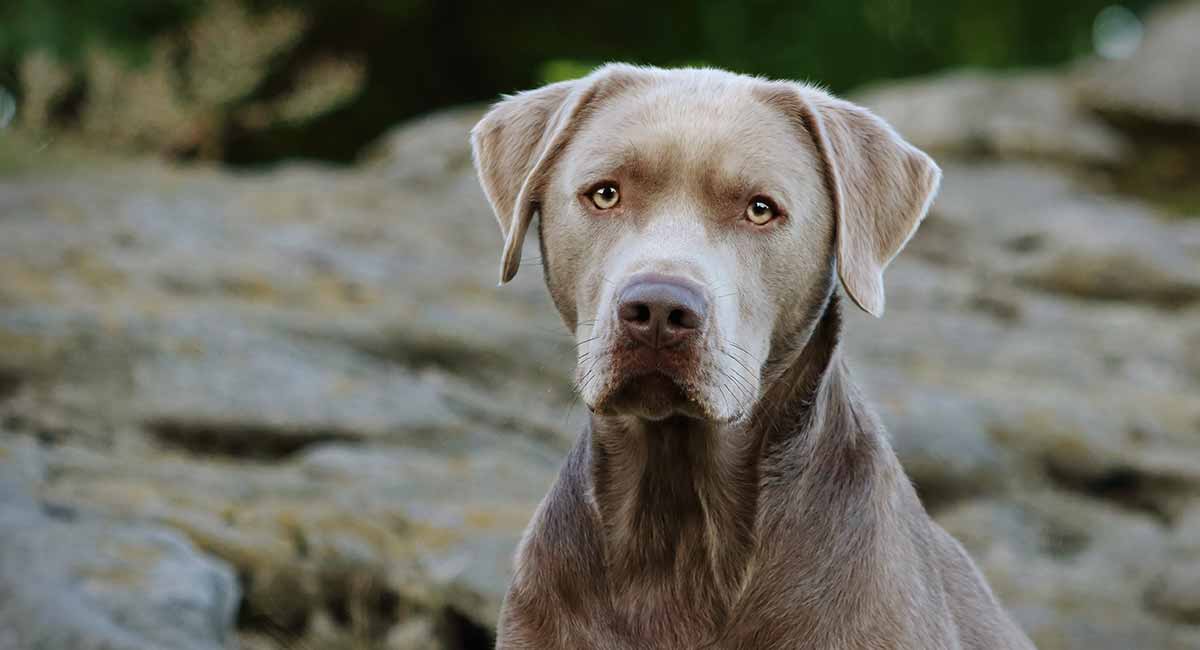
Many purebred dog breeders feel it is outrageous to charge large sums of money for dogs that are crossbred. And some view the silver Labrador Retriever as a cross breed.
Are silver Labs healthy?
Silver Labs suffer from the same health issues as other purebred Labs. Including a predisposition to joint problems and to over-eating!
Two studies record Labrador lifespan at between 11 and 12 years of age and Labs also have a higher rate of cancer (at 31% of all deaths) than some other breed
On balance, Labs are a fairly healthy and well constructed breed, free from the disabilities that plague some other purebred dogs. But there is a potential health issue associated with the coat color dilution gene which you need to be aware of.
Color dilution alopecia
The color dilution gene, that dd which gives us the pale silvery coat, is sometimes associated with coat problems. Specifically, it may be linked to a kind of hair loss.
The problem is known as “color dilution alopecia” and is more common in dogs that have the color dilution gene, dogs like Weimaraners, and now, silver Labradors.
It isn’t usually a life threatening condition, but it also isn’t curable. It can lead to progressive hair loss in young dogs and potentially recurrent infection in the hair follicles.
Thankfully, coat dilution does not always lead to skin problems. Not all dogs with the dd gene carry the faulty alopecia version and most silvers are, in fact, free from alopecia. In most respects therefore, silver Lab health is much the same as that of any purebred Labrador.
Ok, so we’ve covered what you can expect from a silver lab, and how they are both different from, and the same as, other Labs. Now it’s time to address the debate!
The Great Silver Labrador Controversy
Each time we discuss this topic on the Labrador Site’s Facebook page there is some anger expressed by those that are opposed to the very existence of silver Labradors. Though I do think that this is getting less over time, and that these dogs are becoming more widely accepted.
Reports of silver Labradors seem to have first appeared in the United States in the 1950s. Culo Silver Labs was one of the early kennels to produce this new silver color. You may be interested to read this report of an interview with the owner Dean Crist giving his account of the history of the silver Lab.
Much of the debate is focused on how the dilute gene that causes silver fur, got into our Labs in the first place. There are actually only a few options that can explain the appearance of a new gene in a purebred dog. We’ll look at each of these in turn
- mixed breeding
- spontaneous mutation
- hidden genes
The first explanation is that at some point, an outcross occurred, between a Labrador and a breed of dog that carries the dilute gene. A Weimaraner for example.
#1 Mixed breeding
The argument that silver Labs are not purebred, is quite a popular one. Many people believe that the first silver Labs were crossbreeds.
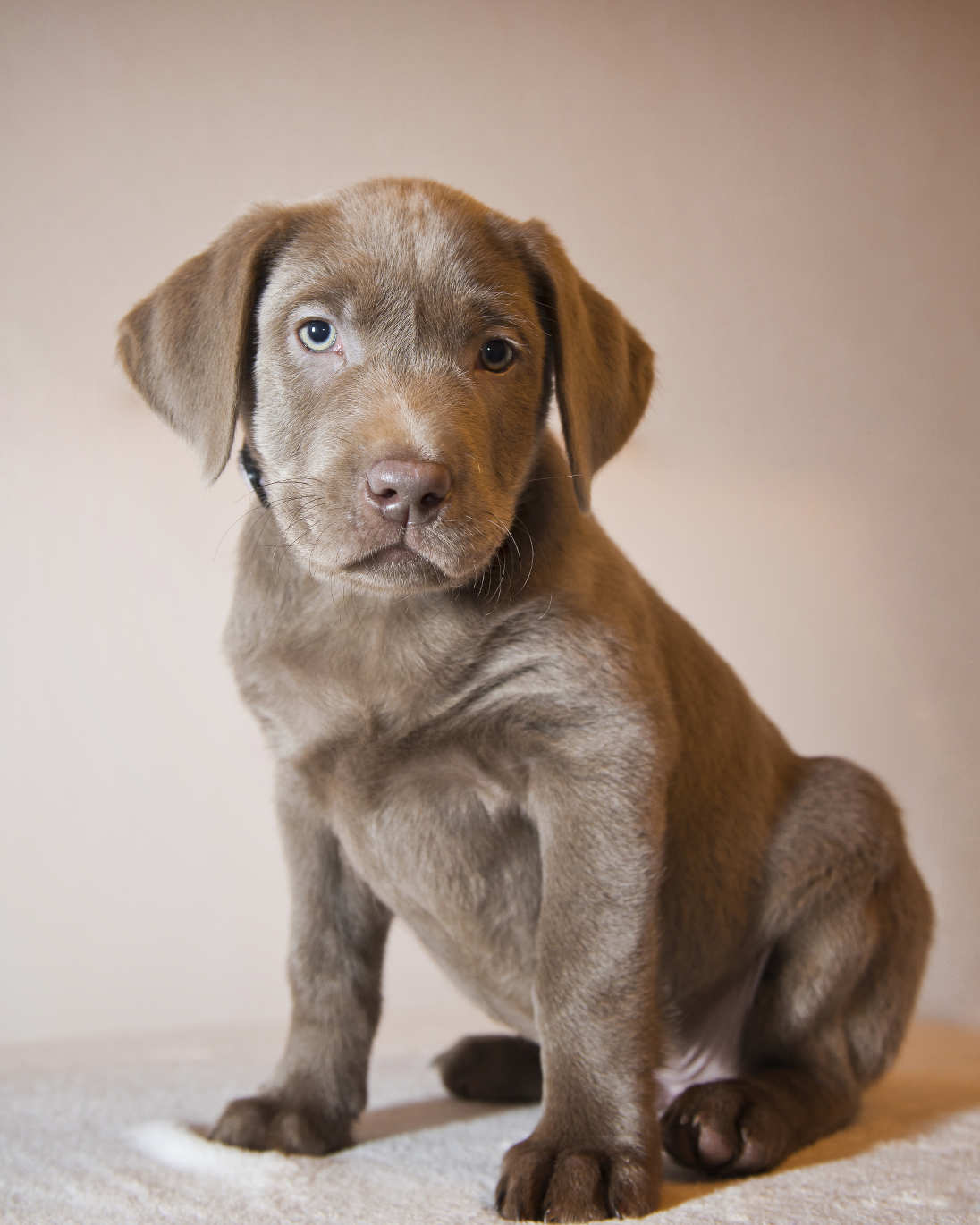
The theory sounds plausible enough as there are clear motives for dog breeders to create a new color variation in an existing breed.
Motives could include financial gain (though breeders couldn’t have known initially how popular the color would be), attention, or just the sheer fun of creating something new.
Diane Welle of Blue Knight Labs does not go quite so far as to directly accuse the breeders concerned
She wrote:
“There have been accusations that these “rare” silver Labradors are actually a cross between a Labrador and a Weimaraner. I will let you be the judge, as there is no evidence at this time, one way or the other. However, it is interesting to note that Silver Labradors can be traced back to two breeders. Those breeders are Dean Crist (Culo) and Beaver Creek Labradors.
Both of their lines trace back to Kellogg kennels (LE Kellogg and Harold E Kellogg) Kellogg Kennels began breeding Labradors in 1922. Guess what else they’re famous for breeding? They’re credited for the ‘rare’ pointing Labrador of course!”
Her point is that ‘pointing’ is, of course, an HPR (hunt point retriever) trait, and Weimaraners are HPRs. An update to her original article, however, also notes that she previously claimed that Weimaraners were also bred in those same kennels, but found out that that fact was in doubt.
Those in favor of the Weimaraner outcross theory often claim silvers have a houndy look about them. To be fair, this is true of many field-bred Labradors of any color. And most silver Labradors today look pretty much the same as any other Labrador Retriever – apart from the fact that they are silver.
The cross-breeding theory has recently lost some credibility due to genetic testing of silver Labs, which has so far failed to show a link to Weimaraners.
#2 Spontaneous mutation
It is not uncommon for genes to mutate. And a spontaneous genetic mutation is another way that a rare or unusual characteristic can appear in a family of dogs that were previously unaffected by it.
This isn’t a popular theory for the appearance of the dilute gene in the silver Labrador. Partly because the other two explanations are both so plausible.
And for a mutation to be identical to a gene that already exists for an unusual coat color in another breed would be something of a coincidence. Many people feel that the spontaneous appearance of this dd dilution gene in the Labrador Retriever gene pool is, to say the least, unlikely. However, it cannot be entirely ruled out.
# Hidden genes
Some people argue that the rare dilute gene has been present in Labradors all along, and that it only appeared, as rare diseases sometimes do, when two closely related dogs were bred.
The capacity of “rare” genes to remain hidden for long periods of time is a phenomenon that most scientists are aware of. This explanation for the appearance of the silver Labrador in the 1950s is perhaps the most valid alternative to the mix breed theory.
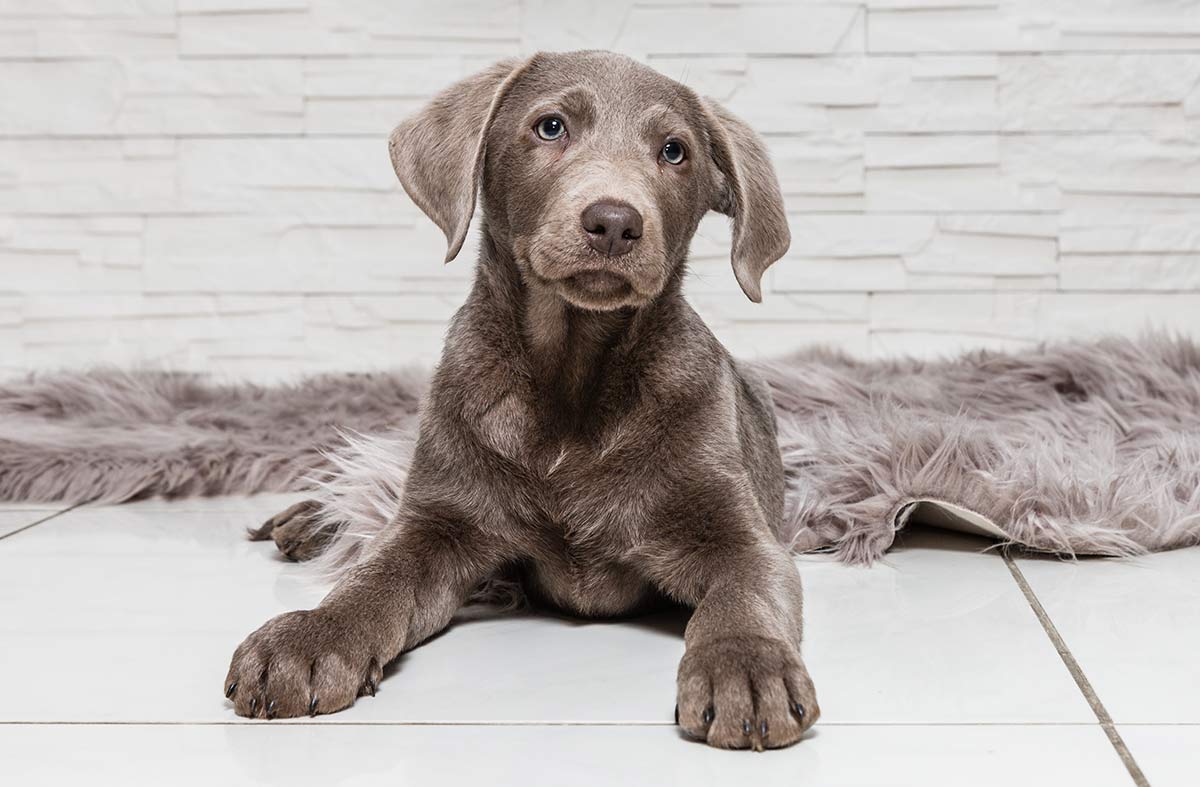
Genes carrying rare diseases or indeed any rare attribute, can remain hidden for decades, only to appear when closely related dogs are mated together. This happens more frequently when gene pools are small, as they are in our pedigree dog populations.
A good example of how that works is B color gene in Labrador. This gene determines whether or not a Lab is basically black or brown. Brown is recessive, just like the color dilution gene, and a Lab needs two copies of the little b brown gene to have a brown coat. And brown labradors only became common when breeders deliberately set about mating them to one another.
The first Labradors were not registered by the AKC until 1917. Before then there would have been regular outcrossing with other similar breeds. Including the Chesapeake Bay Retriever, a breed that does have the dilute gene.

So it is entirely plausible that the little d gene passed from Chesapeakes into one or two Labs before the Labrador pedigree registers were closed and remained hidden in the breed only to reappear in the 1950s when the demand for Chocolates was beginning to rise.
Does It Matter?
Some of you will be bemused at all this fuss over a color. And wonder why it really matters how the silver color got into the Labrador breed. And to some extent I share that view.
I breed rabbits, and with purebred rabbits it’s very common for new colors to be recognized from time to time within established breeds. There are protocols controlled by the American Rabbit Breeders Association as to how this happens, but it’s generally seen as a beneficial and interesting event, not something to be afraid of.
Why it should be considered so radical to do the same in a breed of dogs, I’m not entirely sure!
Of course, most Labrador breeders care very deeply about the future of their breed. Some are concerned about the impact of accepting a genetic change in their beloved breed, without what they feel to be proper consideration.
They are angry at what they see as a dishonest Trojan horse operation to sneak what may be an outcross into the breed line. Pedigree breeders are also commonly committed to the concept of closed registry breeding. And are alarmed at what they consider a threat to the purity of the breed.
Concerns about inbreeding
Some breeders are also concerned about inbreeding in silver Labs. Inbreeding is always a potential problem when breeding animals within a closed gene pool such as our pedigree dog registers. But the problem is made worse when focusing on a small part of that gene pool such as a particular color.
It may be that inbreeding in silver Labradors will not be the problem that it once appeared to be. Former Labrador breeder Jack Vanderwyk, a vehement opposer of silver Labradors, conceded in 2012 that:
Today, in 2012, many, many generations later, the ‘silver’ Labrador population has a fairly viable gene pool, with seven distinct, (almost) unrelated lines. As a result, the average COIs (Coefficient Of Inbreeding) are often not higher than those of other Labrador lines. This means that we shouldn’t underestimate the ‘silver’ population.
It is worth remembering that any risk of inbreeding can be reduced by ensuring a low co-efficient of breeding between the parents of each litter. A knowledgeable breeder will be able to help you with this.
Puppy mills and backyard breeders
There have been concerns that many silver Labrador puppies are irresponsibly bred by backyard breeders or in puppy mills. These concerns can of course apply to any popular breed but are more of a worry when a particular cross breed or color variation become so popular the prices are driven up and less scrupulous breeders try to cash in.
But as silver Labs become more mainstream, there are clear signs that responsible breeding practices are being adopted. And it is certainly possible now, to buy a silver Lab from a reputable breeder
Pros, Cons, And Buying Tips
One of the downsides to bringing a silver Lab into your life is that you may experience unpleasant reactions from those that think silver Labs are ‘ruining the breed’. Or who believe that they should be banned. The comments and social media posts can sometimes be very hurtful
Cons
- Some people may be rude about your dog
- You won’t be able to compete your dog in the show ring
- You may have to pay a higher price than you would for a regular color Lab
- It might be harder to find a responsible breeder in your area
- There may be a small risk that your dog will get alopecia
Pros
- Your silver Lab is likely to have the health and fitness of any other Lab
- This Lab will be as lovable and trainable as any other Lab
- Your Lab will probably be a great family pet
- You will have the pleasure of owning an unusual and beautiful dog
There are questions regarding the registration of silver Labs born in the future. You should be aware that there are people campaigning to have silver Labs de-registered.
Should they succeed it could affect those who want to breed from their dog, or who want to compete with their dog in obedience or field trial competitions that are only open to registered pedigree dogs.
Tips For Buying A Silver Labrador puppy
If you decide to bring a silver Lab puppy into your life, it is very important to find a responsible Labrador breeder.
You’ll need a breeder who health tests all their dogs before breeding, and whose dogs are a part of their lives, not just breeding machines.
Happily, breeding silver Labrador puppies is not mutually incompatible with being a responsible breeder. But you will need to be diligent in order to avoid puppy mills and bad breeding practices.
Silver Labrador puppies should only be purchased from breeders that have tested the puppy’s parents for hip and elbow dysplasia, PRA (inherited blindness) and CNM (a muscle wasting disease.
Remember that a silver Labrador, if registered with a kennel club, will be registered as chocolate. Check the pedigree and health certificates very carefully.
You can find out more about how to find a good Labrador breeder in this article.
Your Silver Lab
If you share your life with a silver Lab, we’d love to hear about them, and about your experiences in finding him or her. We’d also be interested to know if you have experienced any prejudice against your dog because of his unusual coat color.
We love to hear from our readers. So whether you adore silver Labs or oppose them, your politely expressed views are very welcome! Just drop them into the comments box below.
Let us know what you think and why!
References And Further Reading
- “Purebred Vs. Mutt,” The Labrador Site, 2019
- “Dilute Coat Color D-Locus and New D2-Locus,” Animal Genetics, 2019
- “Dilution D Series,” Dog Genetics
- Welle, M, et al., “MLPH Genotype – Melanin Phenotype Correlation in Dilute Dogs,” Oxford Academic Journal of Heredity, 2009
- “Q And A With Dean Crist,” Silver Labs – Just The Facts
- Welle, D, “No Such Thing – Silver Labradors,” Blue Knight Labrador Retrievers, 1990
- “Breed Color Position Statement,” National Labrador Retriever Breed Council of Australia, 2010
- “Silver Labs,” The Labrador Club of New Zealand
- “What’s In The Gene Pool?” Institute of Canine Biology, 2017
- “How Population Size Affects Inbreeding,” Institute of Canine Biology, 2017
- Wagner, S, “The Truth Behind ‘Silver’ Labradors,” Woodhaven Labrador Retrievers
- Hered, J, “A noncoding melanophilin gene (MLPH) SNP at the splice donor of exon 1 represents a candidate causal mutation for coat color dilution in dogs,” 2007
- “Color Dilution Alopecia,” Animal Dermatology Clinic, 2010
- Philipp, U, et al., “Chromosomal assignment of the canine melanophilin gene (MLPH): a candidate gene for coat color dilution in Pinschers,” 2005
- Philipp, U, et al., “Polymorphisms within the canine MLPH gene are associated with dilute coat color in dogs,” 2005
- “Silver Labs – Improvement Movement,” Silver Labs Blog
- Zeirath et al Frequency of five disease-causing genetic mutations in a large mixed-breed dog population. Plos one (2011–2012)

Free Labrador Updates!
Get my training tips, news, reviews, and the latest from The Labrador Site delivered to your inbox

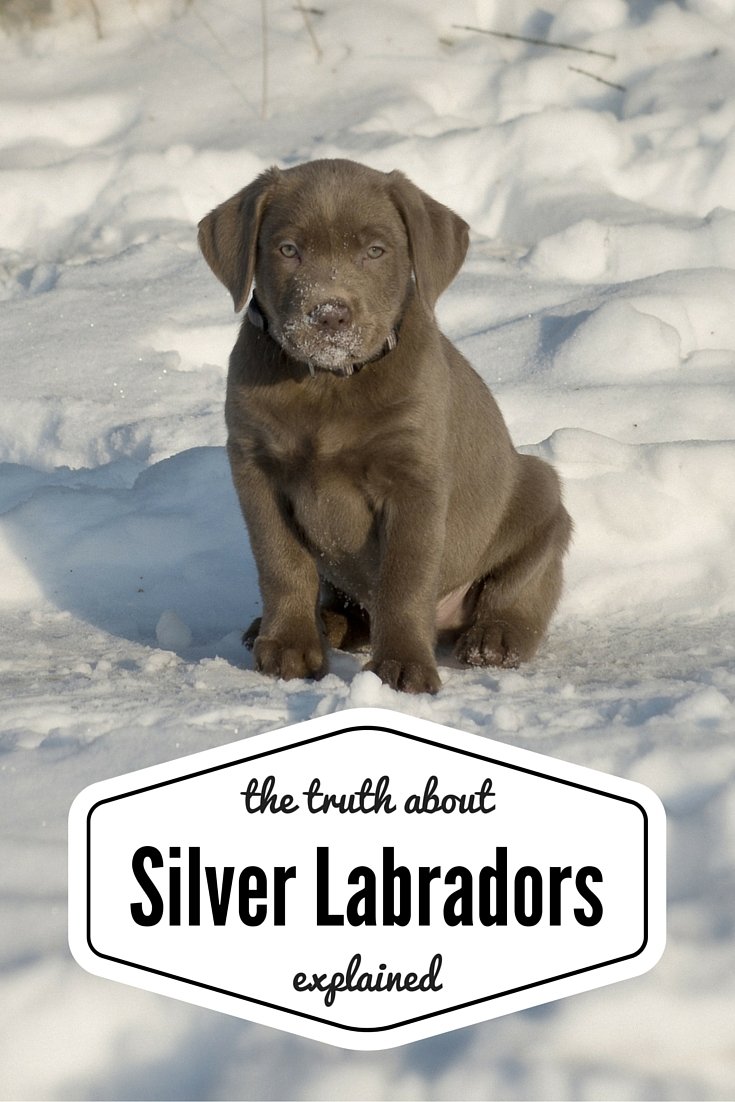
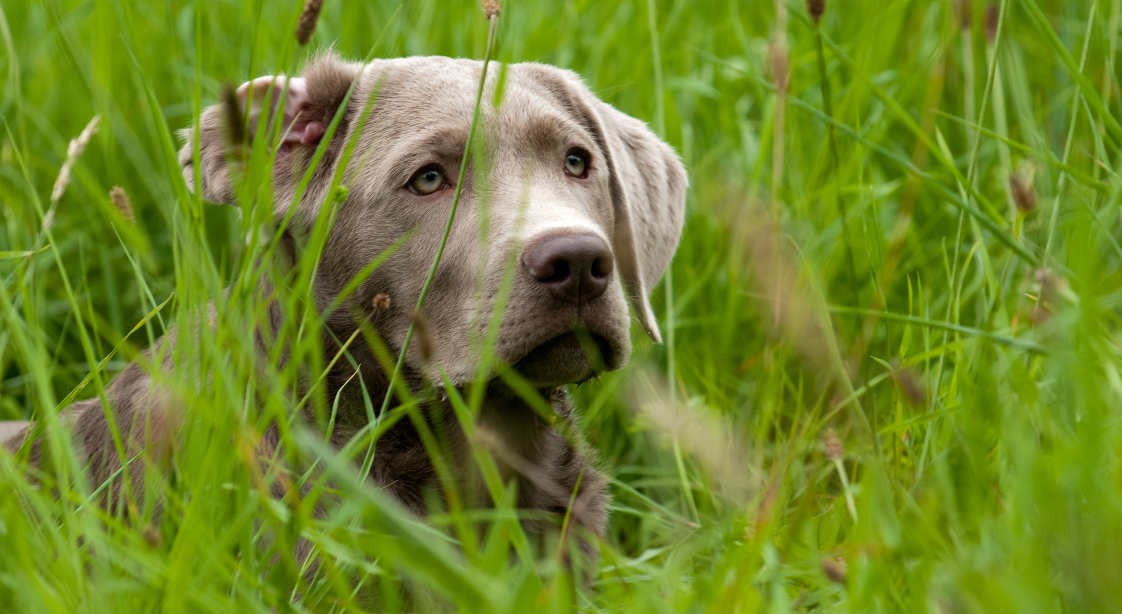
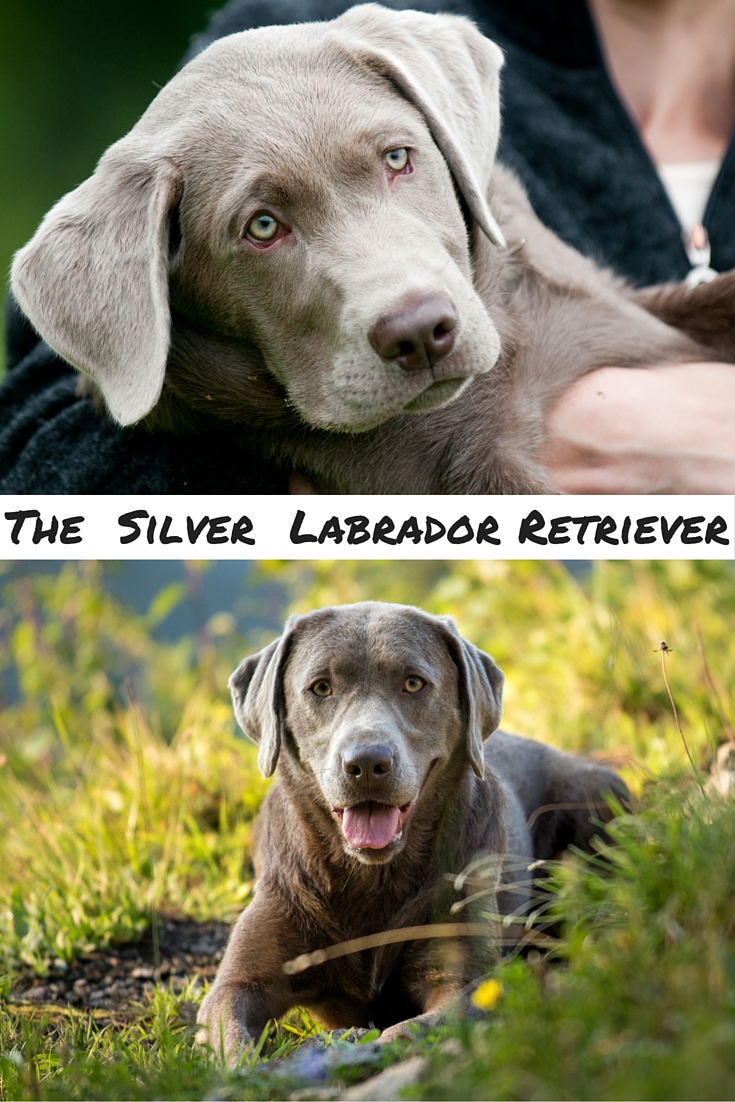


I can’t paste a photo to show what you get when you cross a silver lab with a poodle to achieve the “modern” labradoodle cross-breed. You haven’t have a sense of humour to deal with or even look at these exquisite mutts. We have two in the family. Their silver lab mother is exquisite.
We are currently hand raising two 5 day old silver labs. The breeder brought them to the rescue and said he did not want them and did not want them using “the resources”. The rescue could either take them or he said he would get rid of them. We stepped up and took them in to foster. We are keeping one and have found a family to take the other. They are 3 weeks old now and are so cute. We have two other shelter dogs and four shelter cats. We look forward to adding this guy to our family. His name is Augustus, the other puppy is female and we named her Alexandra. She is going to be a companion dog to a veteran.
Hi Debbie. It’s so kind of you to care for these little pups. Do lean on your vet as much as necessary for support – as I’m sure you know, these little ones really need their mum until 8 weeks old, so these will be hard weeks for them and you. I hope you’re getting lots of love and cuddles for your trouble! 🙂
Sammie
Pippa, why do you write such an otherwise good article about silver Labs, but continue to perpetuate long-debunked misinformation about their origins?
Silvers did not suddenly appear in the 1950s, and they do not all trace to Crist Culo and Beaver Creek Kennels. There is evidence that they existed about the same time as the first chocolate and first yellow labs, which was decades before those two kennels even existed.
This has been known for years. There is no longer any excuse for giving airtime to the LRC’s dishonest, anti-silvers propaganda other than to point out that it is false.
Drop a link to your evidence sources Brian, I’m always happy to take a look
Thank you for your willingness to consider additional information. A link might not work as well but I sent you an email with an attachment which I hope you will find enlightening.
Pippa has received your email – many thanks for sharing! Sammie.
We have 2 silvers – one 6yr old bred from 2 silvers (pick of the litter), and one 4yr old bred from a chocolate and a champaign (runt of the litter). The pure silver does have a mixed single/double coat with a predominant stripe of the double coat along his spine. The mixed has a very even double coat with a very mild stripe along his spine. I have to say they are a joy. Very different personalities but incredibly people and kid friendly… the older one has put our son to bed since our son was 5 and continues to do so 6 years later. Amazing ocean swimmers, high energy but amazing temperament. I can’t complain. We thankfully have not experienced any silver lab judgement — quite the opposite. Everyone does ask if they are mixed with Weimaraners.
I received my silver, Wally, when he was 8wks old. My wife worked with a woman whose daughter was a breeder for them. She had had a litter and she said Wally was a “dwarf”. We got him for free! We did have to guarantee that we would neuter him so he didn’t ass along his “dwarf” gene. I’m still not exactly sure what “dwarf” is in a dog. Wally couldn’t be healthier. Wally did develope alopecia. One vet told us it was the breed. Another vet said it was his thyroid. That vet gave us a prescription. It was his thyroid. The alopecia is gone.
My wife and I, over the years have owned 3 Golden Retrievers, and a black lab before we got Wally. I loved all my dogs, but Wally is special. He’s without a doubt the best dog we’ve ever had.
I can’t put Wally in a dog show? I don’t care! Wally is part of my family, not a show piece. If someone doesn’t like my dog, well, I’m pretty sure you know what they can do with their opinion.
We have a beautiful charcoal girl almost 2 and would like her to have a litter next year, following extensive health checks. We are unsure on the stud dog colour and would appreciate any advice. Would silver or charcoal only produce silver or charcoal pups? What pups would be likely from a fox red or chocolate male?
I have a beautiful silver Lab named Gracie, she is just amazing, she is now nearly 4yrs
Gracie works along side me as a support worker, caring for a Autistic Adult? Gracie is amazing with my client and has not had any therapy training. She is great with everyone we meet ❤️
I have had a few negative comments but all in all most comments are lovely, on her beautiful colour, her thick fluffy coat and how gorgeous she is and how friendly she is.
I feel truly blessed to have her in my life ❤️❤️❤️
The AKC’s most valuable asset is its status as the premier pedigree registry in the US, and likely in the entire world. There are plenty of other registries, some older than the AKC, many newer, but none with the AKC’s overall combination of prestige, age and number of dogs registered.
When people file evidence-based claims of pedigree fraud in AKC registered dogs, the AKC will investigate them, to protect its valued assett.
The AKC has stated that it will not investigate claims of pedigree fraud with silver labs that are based only on the color, because there are purebred silver labs. The AKC will investigate claims of pedigree fraud in silver labs if there is evidence, but it sees the color of silver labs as completely irrelevant to whether or not they are purebred.
The Labrador Retriever Club, which writes the breed standard borrowed by the AKC, had an earlier version of the standard which silvers met for many years. The LRC originally said there’s no reason to think silver labs are not purebred. Newer members who don’t like silvers have rewritten the standard to try to exclude silvers, and flip-flopped the club’s original position, but they have yet to provide any evidence that silvers cannot be purebred.
Meanwhile, the AKC has steadfastly maintained its position that silver labs are purebred labs.
I have a male and a female silver labs. I have had genetic testing done on them and they test 100% labrador. I wouldn’t mind if they were mixed with a Weimereiner in the past but it doesn’t seem this is the case.
We rescued a 4 mos old pup from a shelter. His mom was there. A blue pit bull probable mutt from the south. He is almost 9 mos. 24 ” high at shoulders. Loves water. Wants to hunt. I know where he got his silver, but his papa must’ve been a labrador. So tall. Looks exactly like these pics of silver lab, has light green eyes. People are always asking if he’s a weimaraner. Some day we will check his DNA. But since Pits are so stigmatized, we are more likely to refer to him as a lab mix. Very smart, very loving. Thanks for your science on color genetics. He aced his puppy course at Petco. Lol.
What about the ears. They scream Weimeraner to me. Breeding for colour is the worst way to breed.
A Labrador’s ears clearly have a more triangular shape than the oval-shaped ears of a Weimaraner. DNA testing indicates silver labs are purebred labs, and so do silver labs’ ears.
Hi Pippa !…We were so fortunate to have a Dudley Lab. We purchased her after our Lab passed. At first, I thought she looked different. I researched & founsd an exact picture of her that was referred to as a Dudley. A result of recessive genes. She has the eyes of a brown lab & a light tan coat. She lived to almost 15. She was a truly amazing dog in intelligence, beauty & had the most loving demeanor. Everyone loved Greta ! I would be so appreciative of your take on trying to find another Dudley. I see silvers that resemble her but would love to find another field Lab Dudley. Thanks so much for your help.
-Monica
Our grandkids have a Silver who turned 6 a few days ago. Fred was the runt of his litter, and actually picked his family when they visited the breeder. If the answer is “yes” to “do you have to go potty?”, he walks to the kitchen door, and waits to be let out. He will retrieve anything thrown, and loves chasing lacrosse balls. Relinquishing possession is a game he loves to play. He’s friendly with all dogs, particularly medium to large breeds; and will Indian Crawl to indicate he means no harm. Raw marrow bones are an absolute favorite. He’s brighter than a lot of humans.
I Have CKC registered chocolate lab that is Silver. She is 1.5 years now and a sweetheart. Her colour doesn’t make her any different in traits then any other lab. She is perfectly imperfect just the way she is.
Fact about Silvers:
Beyond Beautiful.
Come and be with me mutant…I’ll love you ’til I die
Just do a DNA test on a “silver” Labrador and I think you’ll be surprised that it will come back showing a mixed breed.
I’ve done DNA testing on both of my silver labs. So have literally thousands of other silver lab owners. The results keep coming back as 100% Labrador Retriever. Why do you suppose that is?
We acquired an adult pet dog from a shelter, and she turned out to have the most unusual color coat that people constantly comment on. We’ve spent the last year guessing as to what combination she might be, and up until this evening we figured maybe Lab and Weimaraner or some kind of hound. (Our vet said that if she was a horse, the color would be grulla!) While on a walk I just saw a dog who looked like her, and the owner told me it was a Silver Lab. Of course I had to come home and read about them – never had heard of them before. So I found your article, with the request to leave a comment!
This dog of ours was brought to a Washington State shelter from one in Dallas, TX, and she had obviously very recently had a litter of puppies. That is all I know, and we can only speculate as to whether she was a street dog, or taken from a “breeder”. She’s about 2 yo, about 52 lbs, a real sweetheart, extremely treat motivated, and highly scent oriented. She’s been a great find, and I think I might be closer to understanding her makeup! Thanks for the info.
I’ve had the awesome experience of owning every color lab our first chocolate then yellow to whites and then another yellow and black recently we bought two silver puppies one for my daughter and one for my brother they’re beautiful and they have great temperaments they are learning just as fast if not faster than any other puppy we’ve had I don’t understand why people would want to deregister them or not see them as beautiful breed that they are there’s no doubt they are Labs but the first time we took our little girl out we were asked if she was a Weimaraner haha also my daughter plans to make her silver pup “Silvy” her service dog, she has a black male who’s retired now so training has begun and so far so good these pups are so adorable!!
Labrador retrievers come on three colors, yellow, black, chocolate. Double dilution which produces white and silver also deprives the dog of protective pigments. Veterinarians agree that there is a significantly greater risk of allergic and skin problems,among other things, that result from this irresponsible breeding. And the breeders have the gall to charge extra for their oddities. No Silver will ever be recognized as a quality dog by any registering authority. Sad situation.
Both my silver pups have AKA papers. My father was a schnauzer breeder for years and also a show judge — that world is nuts. I promised I would never get involved in that kind of judgement… which is actually the worst racket in terms of breeding and pricing… And we had the number 1 stud in his class for years.
I have a 4mo old silver lab. My vet (without assessing her first) said she is a genetic defect amd would suffer life long. I was shocked. He said this when I bought her 2 mo ago. I’ve watched her diligently for last 2 months and her only issue is food allergies with BOTH my black and yellow labs had… I don’t consider that a “genetic defect”. She is highly intelligent. Learned to “come” to a whistle in one day. Learned sit, down and paw all in one day each as well. Also quickly learned what the refrigerator was too hahaha.
I have a 10 year old silver named Milly, her parents were a chocolate male and a silver female, she is the sweetest thing ever and will just love you to death, she does really well with my severely Autistic brother, he gets a bit rough when he’s mad or annoyed, and Milly hasn’t bit him or even growled once. She is the best dog I’ve ever had and is best friends with my cats who play with her all the time. She is a good hunter though, despite never going on a single trip, she’s gotten many rabbits, chipmunks, birds and even a turtle.
If people want to talk about your dog and criticize ask them if they show theirs I’ve seen how show dogs are treated they’re lonely for attention they stay out in the kennel most of the time unless it’s time to go show people are ignorant and everything‘s about the money enjoy your dog to the fullest! We have down syndrome in children what are we gonna do throw them away? Have a wonderful time with your pup!
For all the controversy over silver labs, I would like to pose a question about the breed in its entirety. Were not the original lab breed derived from stray dogs from Newfoundland in Canada back at the beginning of our nation’s founding?
Hi Dan, we have a great article with more detail about the history of the Labrador breed here!
Digitization of historical newspapers has ended the myth that silver Labrador Retrievers first appeared in North America and that they first appeared in the second half of the twentieth century. Numerous ads for silver Labradors and articles document their presence in England far earlier. It appears that those who sanctimoniously advocate breed preservation and oppose breeding silvers have a good bit of egg on their faces.
I have an 11yr old silver that has been amazing. He taught my 18 month old grandson how to play fetch!
We have 2 Silver boys, they are brothers. I have always loved the Weimaraner, but where we live is not conducive to that breed. We decided on the Silver Labs. We did our research and found a reputable breeder. We got our first baby- Charlie and told the breeder that we would love another later on. A year later, the breeder called and told us that Charlie’s mom and dad were having their last liter as they do not over breed their babies. We were hoping to get a little brother and we did! We have the BEST, most handsome, sweetest, smartest, most loyal dogs we have ever had the privilege to know. We are so excited to see what they are becoming right before our eyes. Our oldest Charlie is the sweetest, he will look at you and you can tell he is “reading” your emotions so that he can help and please you. Every time we walk into a room, he will grab one of his toys to present to you to obviously to make you happy. Then there is our Max! He smiles…he looks like he is going to eat your face! It is the most adorable trait. He is so happy and full of love, that he talks and wags his whole body while snarling/smiling! He will then curl up as close as possible and snuggle in on your lap, even though he is 65 pounds! They are hands down, the best dogs we have ever ever had!!! We have had a couple people make comments about them being “dirty”. We just ignore them and will take our amazing boys away so that those hateful people are not allowed to enjoy our babies! Their loss!
We have a 7 year old Silver. Got him as an 8 week old pup. Great dog! Handsome, smart and 74lb healthy animal. Compliments galore on his coloring and temperament. We had a chocolate for 14 years before him and loved him dearly also. Sometimes I feel the Silver is a reincarnation!!
Thank you for an interesting article. It seems entirely plausible that the dilute gene can have produced this silver colour when you consider that as I understand it the three main colours of labs appeared to have been black, chocolate and red. The appearance of the ‘yellow’ lab, in some very different shades which then became hugely popular, would then appear to be a product of the dd gene? It would be interesting to know if this is the case. (my labrador had a litter of 12 with two almost white and two sandy coloured along with 6 black, from a very sandy coloured yellow sire and black dam) Many people in the uk consider that the Red Fox colour lab is new but it would appear that this was one of the original colours that lost out to the more popular yellow, in all its different shades, though the Red Fox colour is seeing a huge resurgence of popularity in the uk now.
We have a 7 and a half month old Silver Lab that we unintentionally bought from a puppy store. I took my son in to look at the different types of breeds, so he could see what each was like in person, including temperament. And, of course, after meeting this lab puppy we fell in love. I don’t like to support puppy stores as I know they have a reputation for buying puppy mill dogs, but these dogs need homes too. It turns out ours has pretty bad hip dysplasia, so there’s another warning to avoid purchasing puppies from a pet store and not a reputable breeder. But, we knew the risks and as such are comforted in the fact that he ended up in the best home as we’re prepared to do what we have to in order to give him the best possible life. Who knows what might have happened to him had we not found him. He has the best personality. He loves absolutely everyone he meets, it’s a challenge to teach him not to jump up and lick faces. He’s very smart, though a bit stubborn. He’s great with our kids and other dog. He loves his walks with me every day. He potty trained easily, doesn’t chew on furniture, and brings his water bowl to us when it’s empty. LOL He’s just a great dog and we love him dearly. So far, people are fascinated by him and comment about how they’ve never seen a Silver Lab in person and that he’s beautiful. I know people are going to have their opinions as they do with everything, and that’s fine. I have mine as well, but I will always be respectful to others. I just hope for the same in return.
I adopted a female Charcoal Lab 2 years ago when she was 8 months old. I am her third (and final) home. I have a Golden Retriever and a Westie that both love her. We were able to overcome a laundry list of behavior issues with a lot of training and exercise. The only 2 problems I have had trouble with are counter surfing and barking when she gets bored. She has turned into a wonderful dog that gets along with other dogs and LOVES kids. My Golden had a litter of 9 pups this past spring and my Charcoal girl helped with the pups from day one. If you visit my home you will not find a thing on my counter tops due to counter surfing and of course plenty of dog hair everywhere. I find no difference between the dilution coat and the traditional Black, Chocolate and Yellow Labs. They are all great dogs!
Any breakers in Western Australia as would live one
I cannot say how much Jax our now one year old pup has changed our lives! Our children are grown up on their own blessings us with six grandchildren of which they all are loved and protected by Jax. This silver beautiful dog is called spoiled with manners and adored by many wiping his feet closing his door and high fives shakes fetch you name it. Our youngest granddaughter says it’s time to saddle him up so I can ride him😂 85 lbs of ❤️
I can’t say enough praise about our 5 year old silver lab, Hunt. My husband really wanted this breed. We got him from a family, first time dog owners with a lot of little kids who did not play with Hunt as much as they thought the kids would. And he sheds more than the mom of a lot of little kids could handle. He chewed up a lot of their backyard as a bored puppy. Hunt was nine months old when they made the difficult decision to rehome him. They previously spent $3,000 on training Hunt. He has the most loving temperament with all dogs and with people once he realizes they are not a threat. He used to be protective around men when I hike with him, but not so when my husband hikes with him. I hike with Hunt twice a day and he knows when it’s about time for our hike. If I am distracted, he will come up to me and just look at me like, isn’t it time for our hike? Other than that, he lays around the house all day, always ready for any adventure, but content to just be near us. He is so great with our 3 pound Yorkie and 10 pound Chorkie. He is great with all dogs we meet on our hikes, he is kind and gives space to the anxious dogs and ignores the aggressive dogs. He loves meeting new people and especially loves kids. He walks under people’s legs to show affection and leans up against them pressing his head on them if they show any inclination that they like him. It is so endearing. He ignores people that don’t pay attention to him. He is afraid of the garden hose and he hates baths. I am guessing that when he was captured in his kennel in the backyard of his former home, the kids used to spray him for fun when they went out to fill his water dish. Hunt also used to gorge on his water until he threw it up. I think they forgot to give him water sometimes. He doesn’t do that anymore. Hunt is the best companion, always trying to please and do the right thing. I can’t say enough positives about his temperament. He is so great, the shedding doesn’t bother me, which initially it did. He is not food aggressive in the least bit and often lets the little dogs eat first from his dish or drink first and even lets them take his bones for a bit. We can take his toys from him easily and give them back. I can’t think of a better family dog with a better temperament than our silver lab, Hunt.
We absolutely love our Silver Lab, Bo. He is the best dog we’ve ever had. He is very sweet, gentle, and intelligent. He’s basically a big teddy bear. We get so many compliments on how beautiful he is, and people are intrigued by his color. He is 4 now, and the only thing I would do differently, is send him to obedience training as a puppy bc he barks and goes a little crazy whenever the doorbell rings or company comes over. Other than that, he’s perfect. He is the best dog we’ve ever owned!
That was a great article. I was given a Silver as a surprise. I hunt quite a bit and did not have my own dog. He was a little over a year old last year when hunting season opened. He did amazing. Pheasant, Quail and Chukar. If the Weimaraner gene was mixed in there somewhere, good. If thing keep progressing the way I hope, he will be the best dog I have ever hunted behind and that is a lot of dogs. In addition to this he is an extremely well mannered dog at home and about. I couldn’t have a better companion. The other Silvers I have run into have been really nice dogs.
IMO “silver labs” are awesome. Dozer is absolutely one of the best dogs I’ve ever owned. Excellent temperment very smart and always happy go lucky playful dog. He is AKC registered as a Chocolate and his silver blood lines go back many many generations according to his pedigree. He just turned 11 months and has been a pleasure to train and have as a companion. At this point he goes about 95 lbs. and has a very sleek and muscular stance. They are truly beautiful dogs and should be a welcome addition to the breed. My “Dozer” has not only the natural bred hunting instincts of the Lab family he also is a natural scent and tracker dog. Haven’t done any specific training in either sport and he just does it without thought. So far he has been a great part of our family and one of the most loveable animals, he even likes our cats which he plays and hangs out with daily. Breed argument aside these are fantastic animals and act like any Labrador Retriever should. Truly a compliment to the breed and should be allowed in or recognized as Silver Labrador Retriever by AKC and other kennel clubs.
This isn’t related to Silver labs directly, I have a question about ‘low/non shedding’ labs. I’ve owned two black labs and have now discovered people are breeding low shedding. Personally, I don’t agree with messing with Gene’s, can you tell me more about these dogs. Are they AKC registered. Are they purebred English labs? Thanks
Can you have a dD? And if you can I assume it would still be Chocolate?
dD would be the same as Dd. the dominant gene is always listed first. in this case, the three possible combinations are DD (chocolate), Dd (chocolate), and dd (silver).
I have a 5 yr old silver who is the best companion! He has recently started with alopecia along his sides and stomach. Does anyone have recommendations on what to use to protecting the skin in the hair loss areas?
We rescued a year old silver with hair loss along both sides and belly down to genital area. He just turned 5 and we read that melatonin MIGHT help. He was getting sunburned in the summer and had to wear a uv shirt. The vet tried the melatonin 3 mg twice a day. It’s been 3 months and he is getting fur growth. It’s soft, lighter puppy fur on his sides but his underside is actual adult fur. He’s two-toned and we love his individuality.
Look up Weimaraner. A silver dog (or darker) with a cropped tail. It’s not a Labrador. Weimaraner is a beautiful breed & loving loyal dog.
We rescued a our Silver Lab after she was dumped with a couple others on a back road near a friend’s house. Our friend actually saw her being dumped. She had just had puppies too. Our vet said she had likely had several litters and was done with her “quality puppy” life cycle. She is the best dog! So smart and learns very quickly. She is likely 8 now. We have a neighbor who has 2 male very ill-behaved Yellow Labs. Anytime we’re all around each other, if anyone asks about her (everyone does because she’s so beautiful and well behaved) he loves to beat me to the punch and tell people “Oh she’s a Lab/Weimaraner mix.” Hater.
We have a Silver Lab Misty who is now 11. We also have a 4 yr old Yellow named Ruger. Misty is the best dog we have and so smart! She has been a great leader for Misty. Although I have to say, she recently was diagnosed with Diabetes and Cushing Disease. She is doing well on meds and will get another Silver in the future!
I have a Silver Labrador Retriever! Register as a Chocolate Labrador with AKC. He is 2 years old. His name is Sterling and he is the sweetest dog ever! A dog has bit him before and all Sterling did was try to lick him. Not a mean bone in his body! My Mom says it is a “God Thing” that I got Sterling Shadow. At about 6 months I notice he started running into furniture and being super clumsy. I took him to my local Veterinarian who then made an appointment with a Veterinary ophthalmologist. The Ophthalmologist was in Covington, La (about 4 hours from Monroe, La where we live) and tested his eyes. He told us he had Cataracts and Detached Retinas. If he just would have had the cataracts, the doctor could have fixed his vision. Sterling sees light and shadows. I literally cried the whole way home. Devastated that my dog was blind. On the brighter side, Sterling is super spoiled! I love him no matter what. He is brilliant and can walk our whole neighborhood with out running into anything!! It’s so impressive to me! I have know found out that there is a Retinal Transplant Surgery that dogs can have, it’s just expensive. Ive looked for College’s to take on his case and messaged Doctors that would like to help him. He’s just so young I wish I could do something more to help him! Let me know if anyone else is going through this!
Thanks so much!
Haley and Sterling
Does anyone have a Uk reputable silver Labrador breeder recommendation please
As we approach the end of Mandalorian season 2, I have decided the my ~5yr old Graycee is also probably 75% Beskar steel…she’s so shiny! She’s definitely about the smartest and prettiest of the now 5 labs I’ve had. I will definitely end up with more silvers! Agree with others here, personal dislike is no reason to wage war against their existence. Save your frustration for when they are a recognized new color. 🙂
We have two Silvers and have definitely felt the snobbish opposition to silvers. So sad! We were told would have skin issues by a prior vet, but that has not been the case. Best dogs ever. I would say as with any lab, they calm significantly after second year. I never expected to connect with and love a dog like I do our silvers. Glad they are part of our pack!
I totally feel you on this!! My Silver is my favorite dog yet, his personality is contagious!! :))
I’m a very proud to say I have a 1 yr old silver/ charcoal lab … I’ve had labs for years and I have always had yellow . Sadly 3 weeks ago I had to put down my old 13 yr old yellow hunting buddy 🙁 .. my sister showed up a few months ago w a little male silver and he bonded instantly w me … I wish I knew more about where he came from and genetics but she actually saved him and his brother from going to pound as they were abandoned in a house after some family issues the people couldn’t keep them … so I of corse took my now best buddy “Titan” as a 3 moth old then … he is literally or of the best tempered , smart , handsome dogs I have ever had !! I don’t have any papers or anything on him but I really don’t care best dog ever I don’t know how I got so lucky !!! He has a great home , a 13 boy , he swims , hunts , not afraid of guns , and does everything any of my other “pure bred” labs have done and Is BY FAR … the mellowest pup lab I’ve ever seen !!
So I don’t care what anyone says about coat color he could be purple for all I care best dog I’ve had for many years right from a a young pup to now and he’s only 1 .. he would pass most service dog training classes w ease at 6 months old without any training at all ! Very happy dad !! Look forward to many good hunts and family time w this dog ! Couldn’t be happier ! And he was FREE!!😉👍.. I couldn’t put a price on this dog if I knew how he was going to be I would have paid 5k or more for this dog !
Everything you could possibly ask for in a lab this dog has ! Just thought I’d share if I could post pics and vid I would have to prove my story even more 🙂
Hey there! Proud owners of a 10 week old Champagne Lab from Kentucky Labs. He is absolutely adorable, incredibly friendly, so stinkin’ smart, and the absolute best dog we’ve ever had the pleasure to call our own. I can see why pedigree breeders would be hesitant and/or downright unhappy with something “different”, but IMO, since there’s no scientific evidence that links them to the Weimaraner (or any other dog), it should be dropped. Thank you Pippa for your amazing advice and for providing this open-minded and factual article. You rock!
I am the very proud owner of a silver lab. I didn’t want a dog when I came across her breeder. But I stopped by to see the puppies, because who doesn’t love puppies, and once I held her I just had to have her. Her breeder saw how she responded to me and immediately offered me to pay half price. I stood in a snow storm for three hours to get her. I don’t regret one minute of it. She is a pampered princess indeed.
She has lots of energy and her best friend is a gray tabby cat. She is happy to see anyone in the family but make no mistake she is very much my dog. She follows me everywhere. I work from home and when I tell her to go to work she goes straight into my office to her bed and blanket. She has tons of toys and carry’s them in her mouth most of the day.
She is absolutely loving and playful. She is in tune with me and can sense when I’m not having a good day. She even lays in the bathroom while I take a bubble bath.
Her temperament is gentle and kind, but she shows every sign that if I were in trouble she would protect me. She enjoys kids of every age. Gypsie is not too fond of strangers and comes to me for reassurance when new people are around. She likes to ride beside me in the passenger seat of my mustang with the top down. She can’t get enough sniffing the air as we cruise down the road.
We have been training her to flush birds and retrieve birds for hunting with my husband. Goofy about it is one way to say how that’s going. While she has all of the standard characteristics of a Labrador, I find she is kind and a lot more loving than other labs I’ve owned.
My baby girl is a once in a lifetime kind of dog for sure! Crossbred, dilute gene, whatever the reason silver labs exist means nothing to us.
If ever anyone was considering a silver lane, go for it. They will enrich your life for sure. If you are wanting a lifetime dedicated companion, the silver lab is where it’s at. My silver lab is the best dog I’ve ever owned. She is my princess and it shows lol.
I have had labs for 55 years now. Love all breeds but I’m a lab man. I’ve had less luck out of yellow labs than any other colors. Not sure why but that has been my luck. Own a chocolate 5 yr old and a black 15 month old. That black dog is the best looking dog I have ever laid eyes on and man does he have a motor.
All that to say people that question silvers are just snobs. They are gorgeous animals. If my wife relents I fully intend to buy one tomorrow!
Ripley is an amazing 7 mo. old silver Lab. I came across him when I was leaving work and witnessed a car dumping him onto a busy street 2 months ago. Took him home that night and decided to foster him till I could get to our vet 3 days later. Found out at the vet he had Parvo. We decided to keep him and have him treated. He kicked it in 5 days. Best decision we could have made!! He is rambunctious and has loads of energy, but is eager to please and easily trained. He loves to give hugs and cuddle up with you. I can’t wait to see what adventures await for us in the future!
We have had Black Labs for many generations on our ranch and now as my Wife and I are retired we are considering a silver Lab. Thank you so much for the wonderful and inciteful work you have done!! On helping us on our search for a new Family Member!
Ron and Joyce Blair
Redmond,Oregon
I have had black, yellow, white & cross breeds. But, the one I have now is silver. King is 12 years old and I inherited him from my son (who got him my our neighbor). I’ve been familiar with King all his life. My daughter bought his parents’ as puppies. I received a puppy from their first litter. The puppy’s name was Boone. He passed away when he was 5. They were/are as silver as one could be. They were/are loving, passive and sweet labs. They will make anyone fine pets. I encourage you to obtain one!
I’m a proud mom of two silver boys, both around 2 yrs. Our first came from a breeder in MO (found on FB) and the second we got from a rescue group after he was surrendered to the NHS (we confirmed that he was originally from Viking Silver Labs in MN).
I grew up with 2 chocolates and a black lab and can say that I haven’t seen any differences in temperament, coat, etc.
My boys are very socialized with other dogs, as I take them to a leash-free park daily. I’ve heard a lot of different opinions and questions from other dog owners that we run into about their origin and if they have any health problems (which we have not experienced). This article was a good look into their history and comparison to other Labrador’s.
If someone has a problem with the color of a Labrador, they should probably reconsider a few things 😂 If you don’t like the color, then don’t own them. I’ll take all of the silvers ❤️
It is not the color for me, the Breed Standard is Black, Yellow and Chocolate. Maybe work to get it registered as a new Breed with AKC/CKC. Registering a Silver dog as a Chocolate defeats the purpose of having a unique Breed. I would certainly support that.
Are you aware that the original breed standard allowed silvers? Enthusiasts of silver aren’t changing the breed. The hypocrites who write the breed standard are trying to practice revisionist history. Not doing a very competent job of it, either.